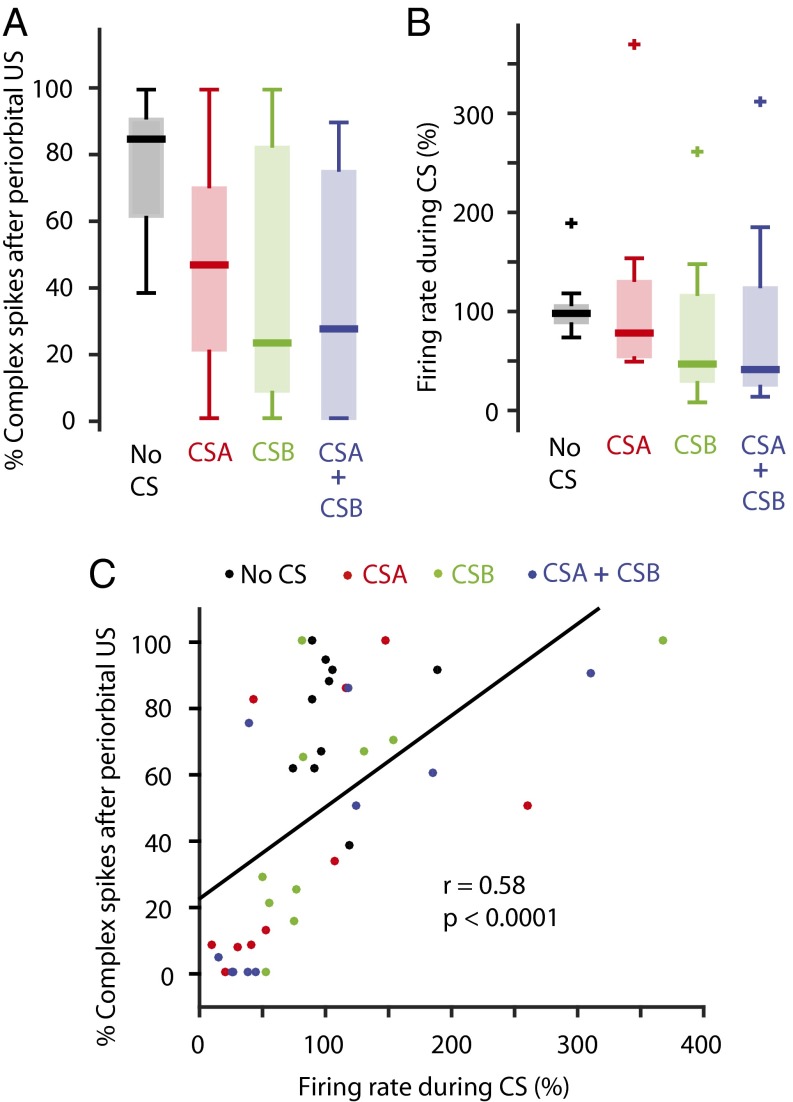Fig. 4.
The probability that a periorbital US elicits a complex spike is reduced if it is preceded by a CS-induced suppression of Purkinje cell activity. (A) The probability that a periorbital stimulus elicits a complex spike depends on whether it is preceded by a CS. (B) Simple spike activity during the presentation of different CS combinations or without a CS, relative to the background-firing rate in the same cell. (C) Correlation between the suppression of Purkinje cell activity induced by a CS and the probability that a subsequent periorbital stimulus elicits a complex spike in the same Purkinje cell. Each point in the scatterplot corresponds to the average value for each CS type, for each cell (1 cell = 4 points).

